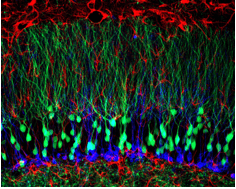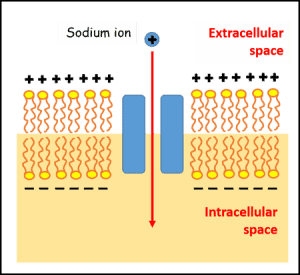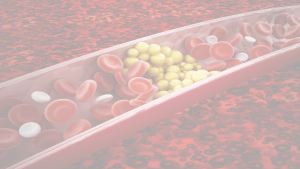Cannabis has been smoked for millennia by people across the globe. Nowadays, this substance is consumed in many different ways and contexts, whether alone, with friends or at a party; smoking, vaping or even mixed in culinary recipes. Cannabis is very present in the news lately, since the situation and circumstances surrounding this substance are evolving at a great pace. Many countries are legalising medicinal and recreational use of cannabis. Moreover, scientists keep finding evidence supporting the therapeutic applications of this plant.
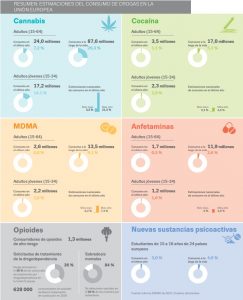
Estimated drug consumption in the EU. Source: ESPAD, 2015.
According to the 2018 European Report on Drug Use, cannabis is the most commonly used drug in Europe by most age groups. It is estimated that more than 14% of Europeans between the ages of 15 and 34 have used cannabis in 2018 [1]. According to the 2018 European Report on Drug Use, cannabis is the most commonly used drug in Europe by most age groups. It is estimated that more than 14% of Europeans between the ages of 15 and 34 have used cannabis in 2018.
Remarkably, it is estimated that male cannabis use doubles that of females [2]. Together, these numbers showcase something we already knew: cannabis is very present in many situations in current society and is an important part of many people’s lives.
The most common way of using cannabis is smoking. However, research has shown this is the most harmful way of doing it. Let us tell you why.

Percentage of people ranging from 15-64 who have at least once consumed psychoactive substances (top) and who have consumed them during the last 12 months (bottom). Spain, 1995-2017. Source: Ministry of Health’s EDADES report.
Many people only smoke tobacco. Almost 70% report having tried it during their lifetime and just above 40% claims having used it in the last year [2]. Smoking tobacco is one of the main causes of death in Spain, having a great impact on the development of cardiovascular disorders, cancer or diabetes. It is estimated that tobacco use in Spain is responsible for at least 52.000 deaths per year, more than 8% of the yearly total [3].
Now, what happens if we combine these plants? You may not expect the results. According to a University College London (UCL) study, cannabis is less addictive than tobacco, but mixing these substances decreases the drive to stop using any of them [4]. Surprisingly, cigarette use is independent from frequency of cannabis use, suggesting tobacco increases your vulnerability to develop cannabis dependence among those who take both substances. According to this study, combined cannabis and tobacco use contribute to a bigger increment in heart rate compared to cannabis use alone – a physiological effect which adds to the mild “rush” you feel when you use these substances [4].
Recent research by the University of Bristol measured the correlation between psychotic symptoms and combined use of cannabis and tobacco on people aged 14-17. Similarly, they reported that the combination was more strongly associated with psychotic episodes than cannabis and tobacco alone. However, it is essential to say that the study might be biased, especially because it does not mention which psychotic symptoms are addressed in the paper [5]. Therefore, the result has different interpretations. One of them is that the study might support the view that cannabis use is more strongly associated with psychotic episodes than tobacco, but, since cannabis is frequently smoked with tobacco, and tobacco alone showed some association, some correlation between tobacco use and psychotic symptoms cannot be excluded [6].
Mixing cannabis and tobacco is a mainly European habit, with 90% of Europeans and 92% of Spanish claiming to do so according to the 2017 Global Drug Survey report [7]. In fact, they further found that cannabis and tobacco consumers in North America tend to smoke tobacco and marijuana separately, with vaping becoming more popular recently and only 8% of users mixing the two compounds [8]. This habit has historical roots; during the 70s, marijuana was not popular in Europe and the trend of smoking hashish (resin obtained from the cannabis plant) mixed with crumbled tobacco spread out. On the other hand, consumers in America already had access to pure marijuana flowers and used to roll pure joints [9].

Combined cannabis and tobacco.
The debate on the increased risk of mixing cannabis and tobacco is still ongoing. Another study found that nicotine could help minimize the effects of cannabis on memory, especially in young people, as nicotine is known as a neurotransmitter involved in “sharpening” the brain. This could also explain why many consumers tend to add tobacco to their joints, which seems to be a protective mechanism to reduce memory- and attention-related damages caused by cannabis, despite adverse health consequences [10]. It has been incontrovertibly proven, however, that combustion caused by smoking alters the properties of a substance, often forming toxic and cancerogenic particles, with more than 8 million people dying each year due to tobacco smoking.
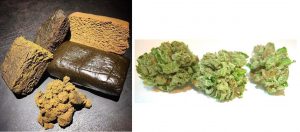
Left: Cannabis resin. Right: Pure marijuana flowers.
On the other hand, therapeutic use of cannabis adds to the fire of the cannabis discussion. Medicinal cannabis use lacks an extensive scientific base, due to huge restrictions cannabis research must face. However, there is evidence supporting its prescription in some conditions where the use of cannabis-derived products has been beneficial for the patient. In serious cases of epilepsy, chronic pain or nausea and vomiting secondary to chemotherapy, cannabis products are prescribed by many specialists when other treatments don’t achieve the desired results. Despite the potential secondary effects, and never being smoked, beneficial medicinal cannabis use is in contrast with the null therapeutic applications of tobacco [11].
The level of awareness that has been achieved on the huge long-term consequences of smoking has drastically promoted healthier methods for the consumption of cannabis alone, such as vaping. Cannabis vaping has become an incredibly popular trend, both in places where cannabis use has been legalised and places where it is still considered an illegal substance. Vaping also bypasses the risks related to both tobacco and combustion.
Consequently, legalisation of cannabis is also aimed to promote the use of tobacco-free cannabis with alternative methods to avoid health conditions caused by smoking. It is still controversial, however, whether cannabis legalisation will reduce tobacco consumption, as nicotine is a highly addictive drug and most adolescents have an early exposure to cigarettes rather than marijuana [12]. In this context, and due to the unique relationship between cannabis and tobacco, legalisation could be a risky decision. Only time will bring about the resolution to this and many other issues arising from such a hot topic.
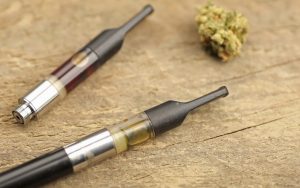
Cannabis oil for vaping.
* * *
This article has been written by members of Drugs and Me, a social enterprise focused on reducing the harm caused by drug use through neuroscience and psychology communication. We have been working and growing since 2016 thanks to the help of volunteers from across the globe. Our members are experts in neuroscience, education and policy; as well as researchers, investors and students. Since our creation, we have collaborated with different universities and companies, as well as media such as The Guardian and Vice, to disseminate this knowledge and try to reach the greatest possible audience.
More info:
- EMCDDA, 2018 European Report on Drug Use: http://www.emcdda.europa.eu/system/files/publications/8585/20181816_TDAT18001ESN_PDF.pdf
- Survey about alcohol and drugs in Spain: http://www.pnsd.mscbs.gob.es/profesionales/sistemasInformacion/sistemaInformacion/pdf/EDADES_2017_Informe.pdf
- Press release about tobacco deaths in Spain:
http://elmedicointeractivo.com/el-tabaco-causa-52-000-muertes-anuales-en-espana-el-29-de-naturaleza-cardiovascular/ - Hindocha et al. Drug Alcohol Depend. (2015): https://www.ncbi.nlm.nih.gov/pmc/articles/PMC4337852/
- Jones et al. JAMA Psychiatry. (2018): https://jamanetwork.com/journals/jamapsychiatry/fullarticle/2669772
- Discussion about correlation between tobacco use and psychotic symptoms:
https://www.nationalelfservice.net/mental-health/substance-misuse/joint-risks-tobacco-and-cannabis-and-psychotic-symptoms/ - 2017 Global Drug Survey report:
https://www.globaldrugsurvey.com/wp-content/themes/globaldrugsurvey/results/GDS2017_key-findings-report_final.pdf - Tashkin et al. Addiction. (2015): https://onlinelibrary.wiley.com/doi/full/10.1111/add.13075
- Discussion about mixing cannabis and tobacco: http://volteface.me/features/a-strange-blend/
- Impact of cannabis on memory and and heart:
https://www.ucl.ac.uk/news/2017/may/adding-tobacco-cannabis-doesnt-affect-high-impacts-memory-and-heart - Bridgeman MB. P T. (2017): https://www.ncbi.nlm.nih.gov/pmc/articles/PMC5312634/
- Press release about the problems with mixing tobacco and cannabis:
http://theconversation.com/cannabis-isnt-the-health-problem-the-tobacco-people-mix-with-it-is-77067


